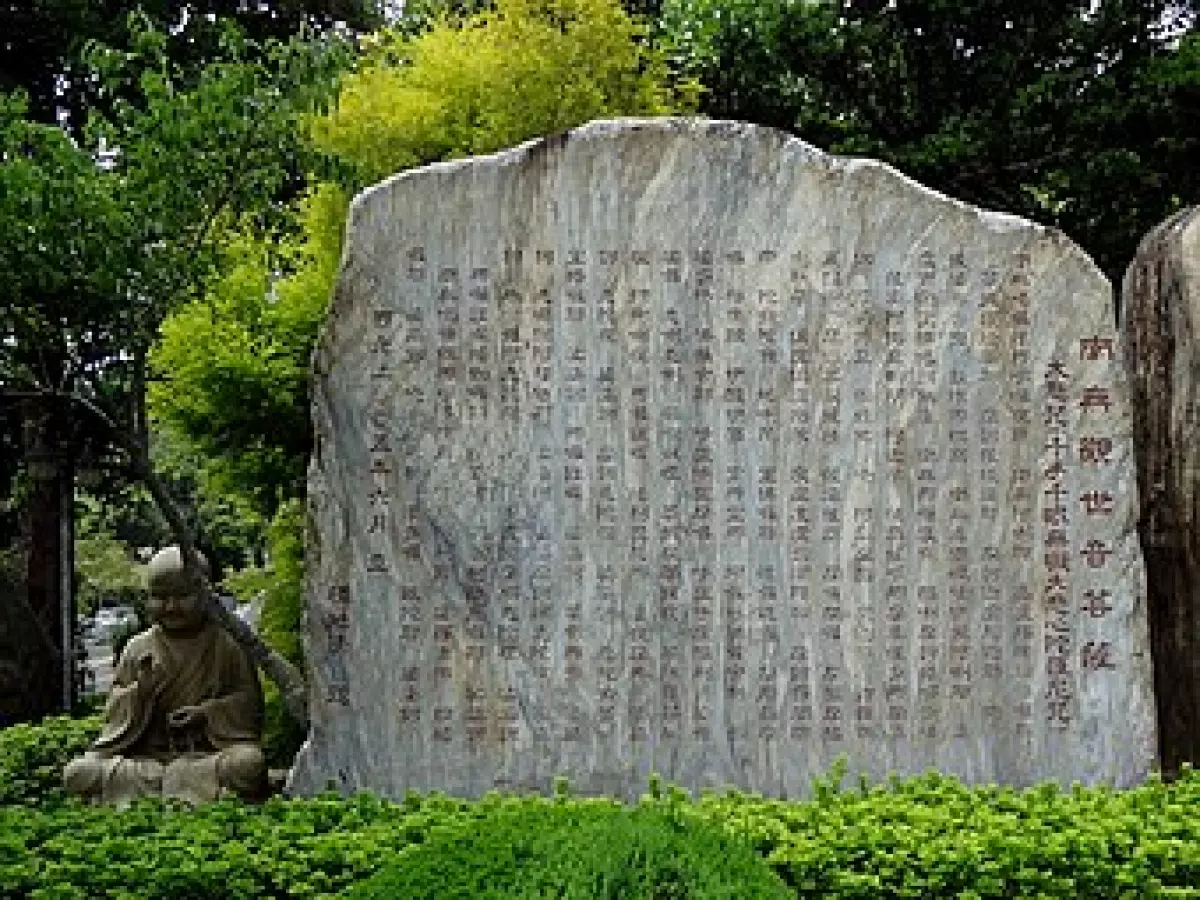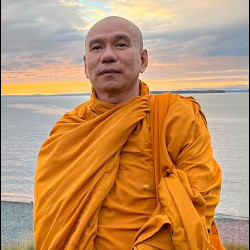 The Nīlakaṇṭha Dhāraṇī engraved on a stele at Fo Ding Shan Chao Sheng Temple in Sanyi Township, Taiwan. Erected in June 2005.
The Nīlakaṇṭha Dhāraṇī engraved on a stele at Fo Ding Shan Chao Sheng Temple in Sanyi Township, Taiwan. Erected in June 2005.
If you're familiar with Buddhism, you may have heard of the Nīlakaṇṭha Dhāraṇī, also known as the Mahākaruṇā(-citta) Dhāraṇī or Great Compassion Dhāraṇī/Mantra. This powerful mantra is associated with the bodhisattva Avalokiteśvara and is widely recited for protection and purification. In this article, we'll dive deeper into the origins and significance of the Nīlakaṇṭha Dhāraṇī.
The Origins and Meaning of the Nīlakaṇṭha Dhāraṇī
The Nīlakaṇṭha Dhāraṇī is believed to have originated from a recitation of names and attributes of Harihara, a composite form of the Hindu gods Vishnu and Shiva. Avalokiteśvara, the bodhisattva of compassion, is said to have recited this dhāraṇī, thereby introducing popular non-Buddhist deities into the Buddhist pantheon. Over time, these deities became considered as various forms or incarnations of Avalokiteśvara. Thus, the Nīlakaṇṭha Dhāraṇī came to be addressed to Avalokiteśvara as Nīlakaṇṭha, a manifestation of the bodhisattva.
Different versions of the Nīlakaṇṭha Dhāraṇī exist, with varying lengths. The shorter version, as transliterated into Chinese characters by Indian monk Bhagavaddharma in the 7th century, gained popularity in East Asian Mahayana Buddhism. It is often recited for protection and purification and holds a similar significance to the famous mantra "Oṃ maṇi padme hūṃ," which is also associated with Avalokiteśvara.
Versions of the Nīlakaṇṭha Dhāraṇī
The Nīlakaṇṭha Dhāraṇī has been translated and transcribed into various languages, resulting in different versions of the chant. In China, Bhagavaddharma's version is widely recognized and revered. Other notable Chinese versions include those attributed to esoteric Buddhist teacher Vajrabodhi and his disciple Amoghavajra. These versions provide different perspectives and insights into the Nīlakaṇṭha Dhāraṇī.
Additionally, Tibetan translations of the longer form of the dhāraṇī exist. These translations, made by Chödrup and Changkya Rölpé Dorjé, offer alternative interpretations and variations of the chant.
The Significance of the Nīlakaṇṭha Dhāraṇī
The Nīlakaṇṭha Dhāraṇī holds immense significance in East Asian Buddhism, particularly in Chinese, Korean, and Japanese traditions. It is believed to bring auspiciousness and protection when recited. In Korea, copies of the dhāraṇī are often displayed in homes to invite good fortune.
In Japan, the Nīlakaṇṭha Dhāraṇī is closely associated with Zen Buddhism and is revered and recited in Zen schools such as Sōtō and Rinzai. The chant is viewed as a powerful tool for inner purification and spiritual growth.
Conclusion
The Nīlakaṇṭha Dhāraṇī is a remarkable Buddhist chant with deep roots in East Asian Mahayana Buddhism. Its origins lie in the recitation of names and attributes of Harihara by Avalokiteśvara, resulting in the assimilation of popular non-Buddhist deities into the Buddhist pantheon. This powerful mantra is recited for protection and purification and holds a significant place in Buddhist practice, particularly in China, Korea, and Japan. Whether you seek spiritual growth or wish to invoke divine blessings, the Nīlakaṇṭha Dhāraṇī can assist you on your journey.













